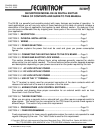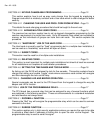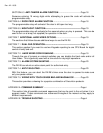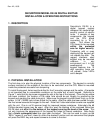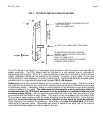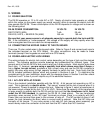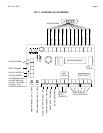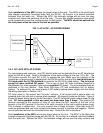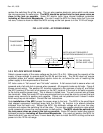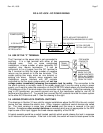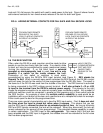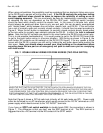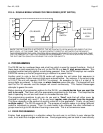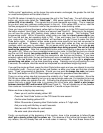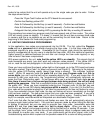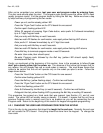Rev. A.2. 10/03
SECTION 4.2 KEYPAD CHANGEABLE PROGRAMMING-----------------------------Page 12
This section explains how to set up easy code change from the keypad by employing a
Program code which is relatively constant and a User code which is often changed for better
security.
SECTION 4.2.1 CHANGING THE USER AND PROG. CODE FROM KEYPAD --Page 13
This details the code changing procedure that should be taught to the end user.
SECTION 4.2.2. ADDING MULTIPLE USER CODES------------------------------------Page 14
The previous two sections explain how to set up keypad changeable programming for the
common requirement of a single User code. Up to 59 separate User codes can be added to
memory so that individuals or groups can have their own code. This section explains the
procedure.
SECTION 4.3 “MASTERKEY” USE OF THE HARD CODE----------------------------Page 14
The Hard code is normally used for “fixed” programming but in a multiple door installation, it
can be used as a “masterkey” code which will open all doors.
SECTION 4.4 SUBSET CODES----------------------------------------------------------------Page 15
This section must be read for all multiple code installations.
SECTION 4.5 DELETING CODES-------------------------------------------------------------Page 15
This section is most important for multiple code installations but should at least be scanned
for all installations as it explains all code deletion procedures.
SECTION 4.6 SETTING THE TIME RANGE AND TOGGLE MODE -----------------Page 16
As factory set, the DK-26 will release the lock for five seconds. This section explains how to
change that setting and enable “toggle” mode where successive code entries will energize
and then deenergize the lock control relay.
SECTION 5. CHANGING LED AND BEEPER OPERATION---------------------------Page 16
Special commands can be sent to the CPU board from the keypad to change the way the
beeper and LED’s function.
SECTION 6 USE OF THE PROGRAMMABLE RELAY----------------------------------Page 17
The CPU board has a second relay that can be assigned to any of several functions which
are explained in the following sections. These are enhancements to a standard installation
and are therefore not always used.
SECTION 6.1 DOORBELL FUNCTION ------------------------------------------------------Page 17
Pressing the “Bell” key will energize the programmable relay which can be used to summon
someone to the door.
SECTION 6.2 DURESS FUNCTION ----------------------------------------------------------Page 17
This section applies only in high security applications where you require the user to be able
to activate a silent alarm if someone is forcing him to open the door via the Keypad. The
programmable relay is used to send this signal.



